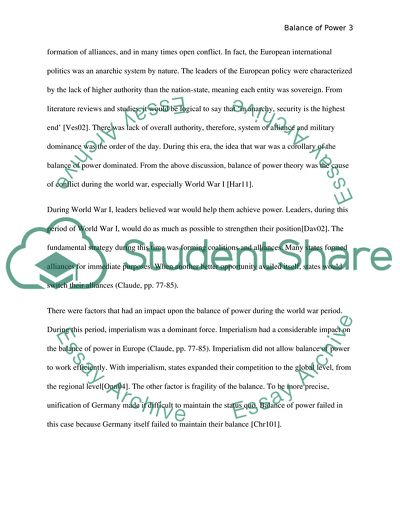Cite this document
(The Merits of Balance of Power as a Mode of Analyzing International Coursework Example | Topics and Well Written Essays - 2250 words, n.d.)
The Merits of Balance of Power as a Mode of Analyzing International Coursework Example | Topics and Well Written Essays - 2250 words. https://studentshare.org/politics/1851460-discuss-the-merits-of-balance-of-power-as-a-mode-of-analysing-international-conflict-and-peace-in-your-answer-refer-to-either-the-first-or-second-world-war
The Merits of Balance of Power as a Mode of Analyzing International Coursework Example | Topics and Well Written Essays - 2250 words. https://studentshare.org/politics/1851460-discuss-the-merits-of-balance-of-power-as-a-mode-of-analysing-international-conflict-and-peace-in-your-answer-refer-to-either-the-first-or-second-world-war
(The Merits of Balance of Power As a Mode of Analyzing International Coursework Example | Topics and Well Written Essays - 2250 Words)
The Merits of Balance of Power As a Mode of Analyzing International Coursework Example | Topics and Well Written Essays - 2250 Words. https://studentshare.org/politics/1851460-discuss-the-merits-of-balance-of-power-as-a-mode-of-analysing-international-conflict-and-peace-in-your-answer-refer-to-either-the-first-or-second-world-war.
The Merits of Balance of Power As a Mode of Analyzing International Coursework Example | Topics and Well Written Essays - 2250 Words. https://studentshare.org/politics/1851460-discuss-the-merits-of-balance-of-power-as-a-mode-of-analysing-international-conflict-and-peace-in-your-answer-refer-to-either-the-first-or-second-world-war.
“The Merits of Balance of Power As a Mode of Analyzing International Coursework Example | Topics and Well Written Essays - 2250 Words”. https://studentshare.org/politics/1851460-discuss-the-merits-of-balance-of-power-as-a-mode-of-analysing-international-conflict-and-peace-in-your-answer-refer-to-either-the-first-or-second-world-war.


